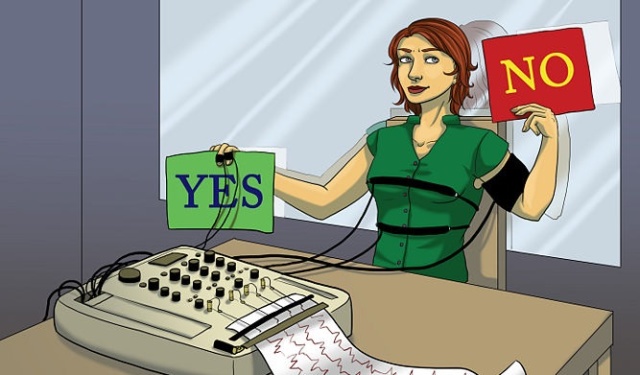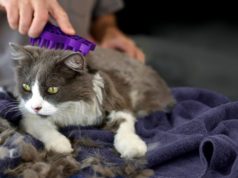To me, my mom is the best lie detector I have faced! But a rather scientific way is Lie detector test. LDT, also known as deception detection, uses questioning techniques along with technology that record physiological functions to ascertain truth and falsehood in response. There are a wide variety of technologies available for this purpose. The most common and long used measure is the polygraph test. However, some other techniques are also in use i.e. The Control Question Test (CQT) and Guilty Knowledge Test (GKT)
- How to spot a liar
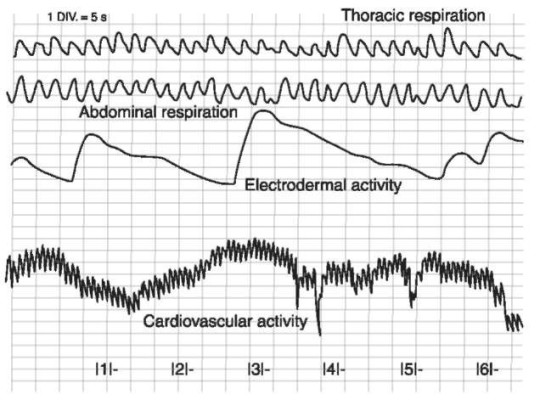
During a standard polygraph test, examiners monitor at least three bodily reactions to determine whether a person is truthfully answering questions: respiratory rate, sweat gland activity, and cardiovascular activity.
Rubber tubes are placed over a subject’s chest and abdominal area to measure respiratory activity; small metal plates attached to the fingers record sweat gland activity, and a blood pressure cuff or similar instrument will monitor the cardiovascular system. Voice stress is not measured. Any noticeable deviation is measure to catch the liar.
However, there are risks of innocent subjects being equally or more anxious than the guilty. Then the actual test starts. Some of the questions asked are “irrelevant” or IR (“Is your name Fred?”), others are “diagnostic” questions, and the remainder are the “relevant questions”, or RQ, that the tester is really interested in.
- How accurate are Lie detector tests
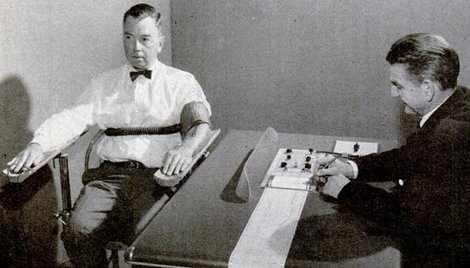
The accuracy (i.e., validity) of polygraph testing has long been controversial. An underlying problem is theoretical: There is no evidence that any pattern of physiological reactions is unique to deception. An honest person may be nervous when answering truthfully and a dishonest person may be non-anxious. Also, there are few good studies that validate the ability of polygraph procedures to detect deception
One reason that polygraph tests may appear to be accurate is that subjects who believe that the test works and that they can be detected may confess or will be very anxious when questioned. If this view is correct, the lie detector might be better called a fear detector.
Evidence indicates that strategies used to “beat” polygraph examinations, so-called countermeasures, may be effective. Countermeasures include simple physical movements, psychological interventions (e.g., manipulating subjects’ beliefs about the test), and the use of drugs that alter arousal patterns.
Despite unreliability, results are admissible in court in some countries such as Japan. Lie detector results are very rarely admitted in evidence in the US courts.
- Cheat a polygraph test
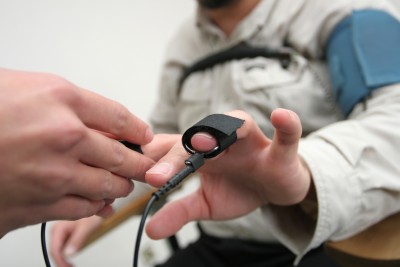
So if these tests are so accurate, why aren’t they required in every situation where truth is at issue? Why spend billions of dollars on jury trials and independent prosecutors when we could just “wire up” the key witnesses and get at the truth with no fuss and no muss?
Some people are so divorced from morality or a guilty conscience that they may test honest — because they are really good liars or have convinced themselves of a truth that isn’t the truth at all.
It may also be possible to change the results through other methods, such as yogic or biofeedback training, the “nail in the shoe” trick (putting a sharp nail in your shoe to cause yourself pain during the questions to skew the polygraph results), or using a legal or illegal drug to calibrate one’s emotions.
Simply put, there is no way to turn a lie detector test into a slam dunk. For this reason, most courts will not admit polygraph results unless both sides of the case agree.
- Acceptance of polygraph test
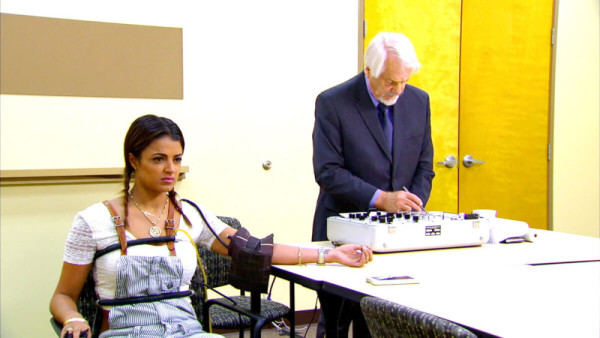
Recently an Indian court adopted the brain electrical oscillations signature test as evidence to convict a woman, who was accused of murdering her fiance. It is the first time that the result of polygraph was used as evidence in court. On May 5, 2010, The Supreme Court of India declared use of narco-analysis, brain mapping and polygraph tests on suspects as illegal and against the constitution. Article 20(3) of the Indian Constitution-“No person accused of any offence shall be compelled to be a witness against himself.” Polygraph tests are still legal if the defendant requests one.
- Movies and shows based on Lie Detector test
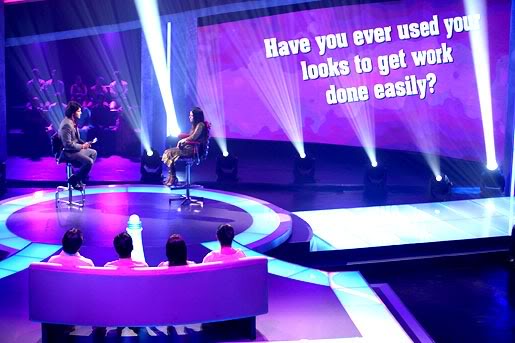
In the movie Ocean’s 13, one of the characters beats a polygraph test by stepping on a tack when answering truthfully, which supposedly raises the polygraph’s readings for the truthful answers so they equal the deceptive ones.
In the television series Profit, there is a memorable sequence at the end of episode “Healing” where the eponymous character, Jim Profit, manages to fool a polygraph. He does that by putting a nail through the sole of his shoe and pushing it inside of his heel while answering every question in order to even out the readings.
Sacch Ka Saamna (English: Face Off with Truth ) is an Indian reality television which aired on STAR Plus and the 2nd season of the series premiered on STAR TV’s new channel Life OK. Both seasons were hosted by Rajeev Khandelwal. The series requires contestants to sign an agreement that they will accept the conclusions drawn by the polygraph examiner. The polygraph test is done by Herb Irvine, a US-based polygraph expert.
That’s all about Lie Detector Test or Polygraph Test. Please give your comments if you find it useful or informative. And off-course, don’t tell a lie !

